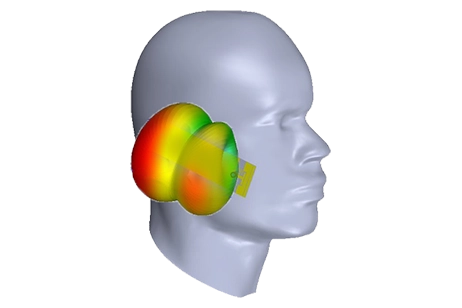Biomedical Applications and EM Exposure Simulation
Simulate medical devices, implants and wearables in anatomical models to compute fields, SAR and tissue heating and verify safety and performance.
Biomedical devices and EM exposure studies must stay within field, SAR and tissue-heating limits. EMWorks simulates coils, implants, sensors and wearables in anatomical models so you can check exposure and adjust designs before testing.
-

EM Exposure
Use EMWorks to model EM exposure from handheld devices, antennas, and implants in realistic anatomical models. Compute SAR, field distribution, and temperature rise to check compliance with safety limits before clinical or human testing. -

Biomedical
Use EMWorks to model biomedical devices, coils, and implants inside anatomical structures. Analyze SAR, field distribution, heating, and exposure limits to improve safety and performance before clinical testing.

